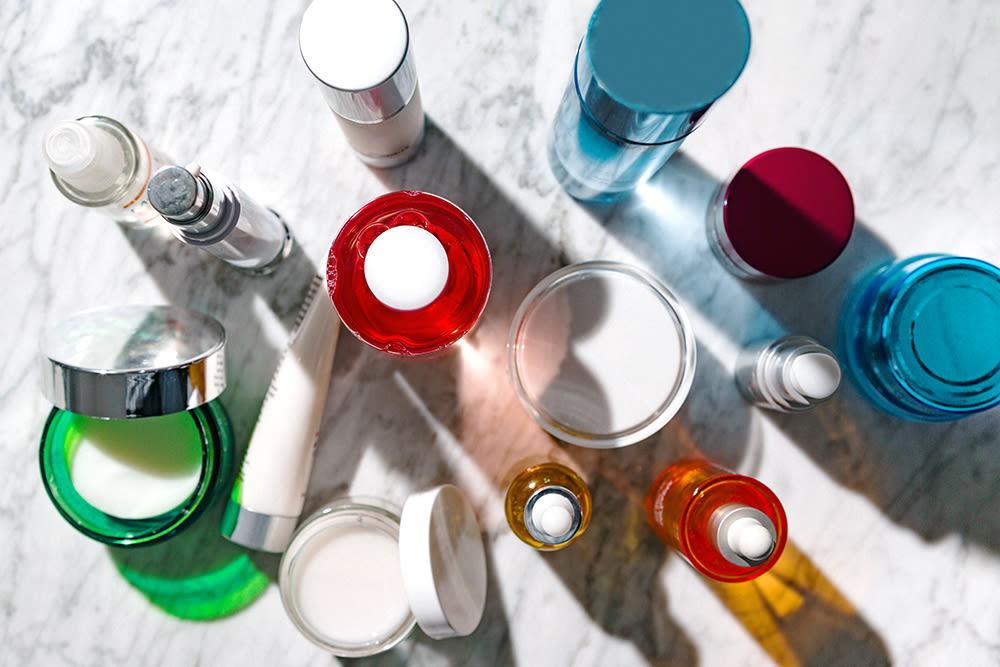I often find myself staring at very caustic, dangerous, and sometimes bizarre materials wondering, “Is this the thing that’ll clear up my skin?” Like, maybe all I need to do to get rid of my oversized pores is take some sandpaper from Home Depot to my entire face twice a day. Or maybe a Tide To Go pen would actually be the best acne spot treatment. (OK obviously not. Very obviously.) But these are just absent thoughts I have every once in a while. Truth be told, I'm a bit of a risk-averse skincare user. I figured anything with the word “acid' in it would leave me red-faced and horrified like Samantha Jones after her chemical peel on Sex and the City. Stick with the devil you know, the saying goes. And I've become closely acquainted with my oily, acne-prone skin.
However, I changed my tune after using Paula’s Choice’s BHA Skin Perfecting Liquid—I can't even begin to tell you how many comments called it out as life changing (maybe you're one of them...). So I gave into Paula. And damn does that stuff work. More on that in a minute.
First, the homework bit: BHA stands for Beta Hydroxy Acid. The most common BHA is Salicylic Acid, typically used for treating acne. BHAs are good for exfoliating—getting rid of dead skin and allowing new skin to grow—and correcting dark spots, photo-damage, and improving the skin's texture. All of those things are good, but acid sounds bad. Should I be scared for any reason? I called my favorite dermatologists of all dermatologists, Dr. Pat Wexler, to elaborate:
'AHAs and BHAs are organic acids, so they can be found naturally occurring in nature,” she said. “BHAs are found in willow bark—salicylic acid is by far the most commonly used BHA for acne. The reason why BHAs are so effective is because they're oil-soluble—so they can actually penetrate the pore to exfoliate, whereas AHAs can only exfoliate superficially,”
Figuring that out was my epiphany. Here, at last, was my Tide To Go pen for my skin cells, cleaning them up and making them like new.
The one little thing with Paula’s Choice Skin Perfecting Liquid is it’s a little complicated. It’s not a toner, it’s not a serum, it’s not moisturizer—it’s pure BHA and the texture of it is a little greasy. Probably tolerable for most people and easy enough to fit into any skincare routine, but before I sold my soul to one brand, I wanted to explore my own product path.
I started, of course, with a cleanser. Dr. Wexler had warned me that cleansers with BHAs aren't the most effective treatment in the world—they're not on your skin long enough to make much impact. But dammit if Renée Rouleau’s AHA/BHA Cleansing Gel isn’t one of the best things ever. It’s super frothy, smells lemony, has teeny gentle jojoba beads and is changing my skin. I’ve been using it 2x a day and taking my time morning and night to kind of massage it in. Since it's not on your face for very long, the double exfoliation (physical and chemical) isn't too much. From there I’ve started using Philosophy’s Hope in a Jarat night (as it is winter and I’m not so against moisturizer as I might normally be) and Mizon’s AHA/BHA Toner during the day.
For masks, I've been playing around with Herbivore’s Blue Tansy Mask. It's very gentle and relaxing to use with a high concentration of AHA/BHAs—plus a very short, very ‘all natural,’ ‘organic’-vibe ingredient list for those who care about such things. It’s definitely worth trying.
Overall, my feelings about BHAs, and acids in general, can be summed up much better by the Renée Rouleau herself. (I talked to her about this story on the phone for an hour because she was just so charming and wonderful.) Her take is this:
'I’m more of a tried-and-true product person rather than just jumping off with the latest and greatest ingredient because I want to see how it pans out. I feel like it’s not authentic to jump on a buzz ingredient that’s not doing that much, so I wait it out and test it on myself and my clients. But AHAs and BHAs have been around for so long—they came out in the early '90s and here we are in 2016. There's a reason they’ve been in products for 25 years,”
That's good enough logic for me.
—Tom Newton
Photographed by the author.
For more ITG editors and the exfoliants they love, read Emily Ferber's take on the best peels for sensitive skin. For oily skin woes, see Alicia Yoon's be-all, end-all Korean product guide.

